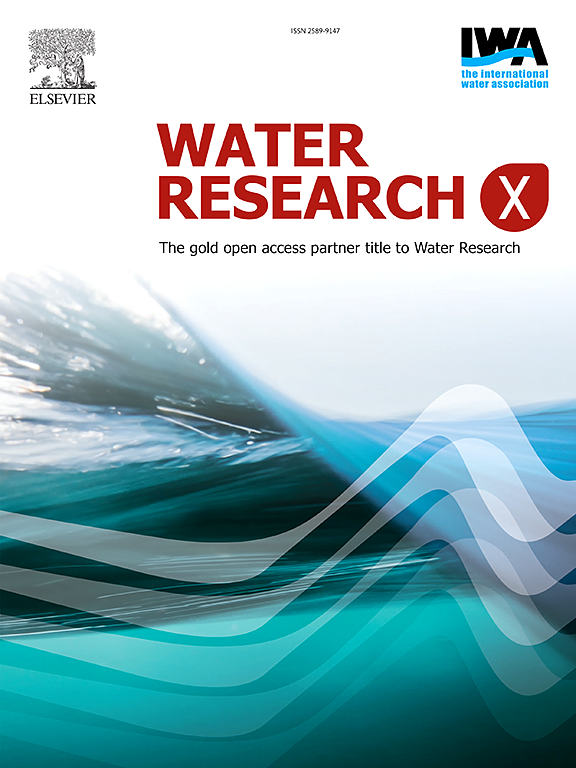Evaluation of the process performance of comammox-like nitrospira dominant down-flow hanging sponge reactor with reduced nitrous oxide emissions
IF 8.2
2区 环境科学与生态学
Q1 ENGINEERING, ENVIRONMENTAL
引用次数: 0
Abstract
Nitrification/denitrification mitigates excess nitrogen in wastewater and reduces nutrient pollution in recipient surface waters but emits substantial amounts of nitrous oxide (N₂O). Complete ammonia-oxidizing (comammox) bacteria provide novel opportunities to mitigate N₂O emissions from wastewater treatment systems. In this study, a down-flow hanging sponge (DHS) reactor with low-strength ammonia-based synthetic wastewater was used to culture comammox bacteria, to study the microbial community structure, and to assess the nitrogen removal performance. The results showed a high NH4+-N removal efficiency of 98 ± 4 % and complete nitrification during the entire experimental period. 16S rRNA gene sequencing and metagenomic analysis showed that comammox-like Nitrospira dominated the DHS-retained sludge, and that comammox-like Nitrospira and ammonia-oxidizing archaea may have coexisted symbiotically. The dissolved N₂O emissions per NH4+-N removed from the DHS reactor were much lower than those from conventional activated sludge processes, indicating that the DHS reactor could be effective in reducing N₂O emissions during wastewater treatment.
降低氧化亚氮排放的类comammos - nitrospira优势下流式悬浮海绵反应器工艺性能评价
硝化/反硝化减轻了废水中过量的氮,减少了接收地表水中的营养污染,但排放了大量的一氧化二氮(N₂O)。完全氨氧化(comammox)细菌为减少废水处理系统的N₂O排放提供了新的机会。本研究以低强度氨基合成废水为原料,采用下流式悬挂海绵(DHS)反应器培养comammox菌群,研究微生物群落结构,并对其脱氮性能进行评价。结果表明,该工艺对氨氮的去除率高达98±4%,在整个实验期内完全硝化。16S rRNA基因测序和宏基因组分析显示,dhs滞留污泥中comammox样硝基螺旋菌占主导地位,comammox样硝基螺旋菌可能与氨氧化古菌共生。DHS反应器中每NH4+-N的溶解性N₂O排放量远低于传统活性污泥工艺,表明DHS反应器可以有效降低废水处理过程中的N₂O排放量。
本文章由计算机程序翻译,如有差异,请以英文原文为准。
求助全文
约1分钟内获得全文
求助全文
来源期刊

Water Research X
Environmental Science-Water Science and Technology
CiteScore
12.30
自引率
1.30%
发文量
19
期刊介绍:
Water Research X is a sister journal of Water Research, which follows a Gold Open Access model. It focuses on publishing concise, letter-style research papers, visionary perspectives and editorials, as well as mini-reviews on emerging topics. The Journal invites contributions from researchers worldwide on various aspects of the science and technology related to the human impact on the water cycle, water quality, and its global management.
 求助内容:
求助内容: 应助结果提醒方式:
应助结果提醒方式:


